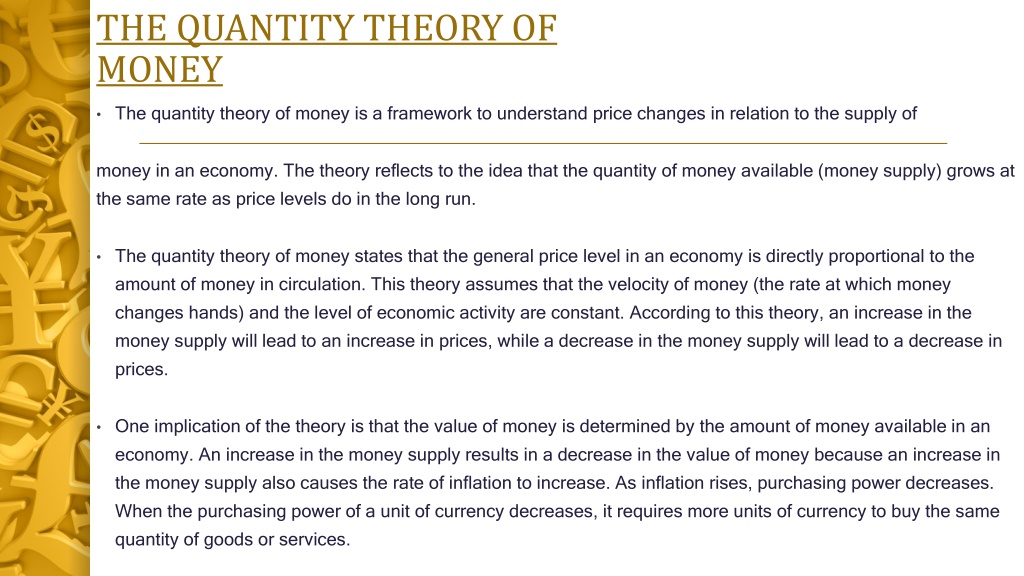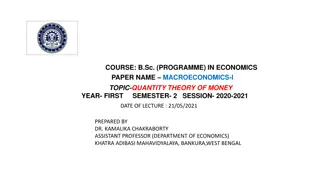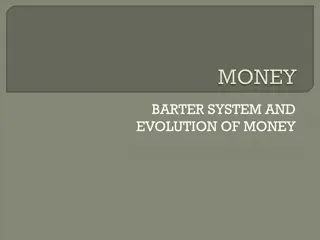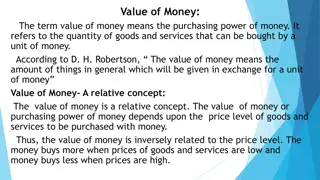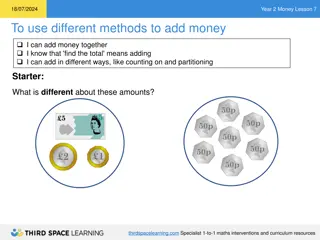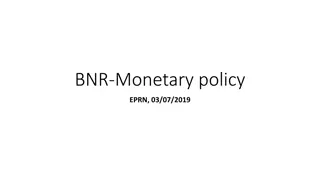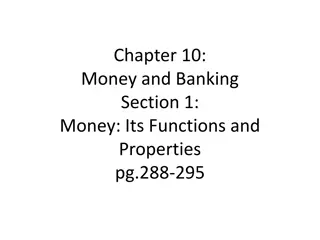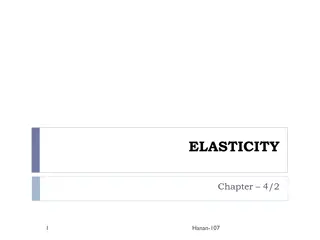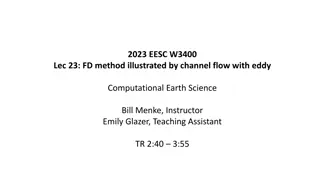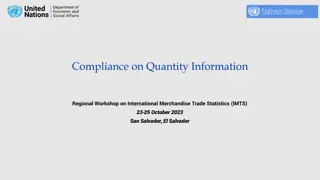Understanding the Quantity Theory of Money
The quantity theory of money posits a direct relationship between the supply of money in an economy and price levels, assuming a constant velocity of money and economic activity. Increases in the money supply lead to price inflation, devaluing currency and decreasing purchasing power. Two main versions of the theory are Fisher's version and the Cambridge version, both offering insights on how changes in money supply affect price levels.
Download Presentation

Please find below an Image/Link to download the presentation.
The content on the website is provided AS IS for your information and personal use only. It may not be sold, licensed, or shared on other websites without obtaining consent from the author. Download presentation by click this link. If you encounter any issues during the download, it is possible that the publisher has removed the file from their server.
E N D
Presentation Transcript
THE QUANTITY THEORY OF MONEY The quantity theory of money is a framework to understand price changes in relation to the supply of money in an economy. The theory reflects to the idea that the quantity of money available (money supply) grows at the same rate as price levels do in the long run. The quantity theory of money states that the general price level in an economy is directly proportional to the amount of money in circulation. This theory assumes that the velocity of money (the rate at which money changes hands) and the level of economic activity are constant. According to this theory, an increase in the money supply will lead to an increase in prices, while a decrease in the money supply will lead to a decrease in prices. One implication of the theory is that the value of money is determined by the amount of money available in an economy. An increase in the money supply results in a decrease in the value of money because an increase in the money supply also causes the rate of inflation to increase. As inflation rises, purchasing power decreases. When the purchasing power of a unit of currency decreases, it requires more units of currency to buy the same quantity of goods or services.
The whole are argument can be shown with the help of the following figure : Versions of Quantity Theory of Money 1. Quantity Theory of Money Fisher s Version: The most common version, sometimes called the "neo-quantity theory" or Fisherian theory given by an American Economists -Irving Fisher suggests that there is a mechanical and fixed proportional relationship between changes in the money supply and the general price level. According to Irving Fisher, like the price of a commodity, value of money is determined by the supply of money and demand for money. In his theory of demand for money, Fisher attached emphasis on the use of money as a medium of exchange. In other words, money is demanded for transaction purposes.
The Fisher equation is calculated as: M V=P T ---------------------(1) where: M=money supply V=velocity of money P=average price level T=volume of transactions in the economy 2. Quantity Theory of Money: Cambridge Version: An alternative version, known as cash balance version, was developed by a group of Cambridge economists like Pigou, Marshall, Robertson and Keynes in the early 1900s. These economists argue that money acts both as a store of wealth and a medium of exchange. Here, by cash balance and money balance we mean the amount of money that people want to hold rather than savings. According to Cambridge economists, people wish to hold cash to finance transactions and for security against unforeseen needs. They also suggested that an individual s demand for cash or money balances is proportional to his income. Obviously, larger the incomes of the individual, greater is the demand for cash or money balances. Thus, the demand for cash balances is specified by: Md = kPY -------(1) Where, Y is the physical level of aggregate or national output,
P is the average price k is the proportion of national output or income that people want to hold. Let us assume that the supply of money, MS is determined by the monetary authority, i.e., MS = M-------(2) THE INCOME THEORY OF MONEY The income theory of money states that the demand for money is determined by the level of income in an economy. As income increases, so does the demand for money, as people need more money to purchase goods and services. This theory suggests that changes in the level of income will affect the demand for money and, therefore, the value of money. Basically, these two approaches are identical and convey the same meaning: (a) income expenditure approach, and (b) saving investment approach. Income-Expenditure Approach: A. Main propositions of Keynes income-expenditure theory of money are given below: 1. Money Income (Y) is Equal to the Money Value of Aggregate Real Output (PO): Y = PO
Prices (P) are determined by the Ratio of Money Income (Y) and Real Income (O): P = Y/O 1. Money Income (Y) is Spent on Consumer Goods (C) or Saved (S): 2. Y = C + S 4. Real Income (O) Depends upon Aggregate Demand (AD) or Total Expenditure (E): O = AD = E 5. Total Expenditure (AD = E) Comprises of Consumption Expenditure (C) and Investment Expenditure (I): AD = E = C + I 6. Total Money Income (Y) is Equal to Total Expenditure (C + I): Y = C + I B. Saving-Investment Approach: Saving-Investment Equality: Keynes s income theory is also called saving-investment theory. In his analysis, saving-investment equality (S = I) is the basic condition for general equilibrium. Keynes saving-investment equality can be visualized in two ways: 1. Accounting equality, and 2. Functional equality. 1. Accounting Equality: Saving and investment have been so defined that they are necessarily equal to each other; saving and investment are equal by definition. In equilibrium, aggregate income (Y) is equal to aggregate expenditure (C + I), Y = C + I or Y C = I
2. Functional Equality: Functional equality explains the actual behavior of saving and investment and provides the dynamic mechanism through which they are equalized. The equality between saving and investment is brought about by the changes in income. Whenever investment exceeds saving, aggregate demand increases and income level rises. As a result, saving increases and becomes equal to investment. Similarly, if saving exceeds investment, aggregate demand decreases and income level falls. As a result, saving decreases and becomes equal to investment.
